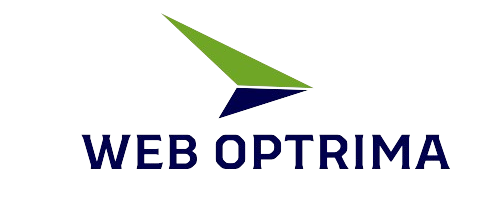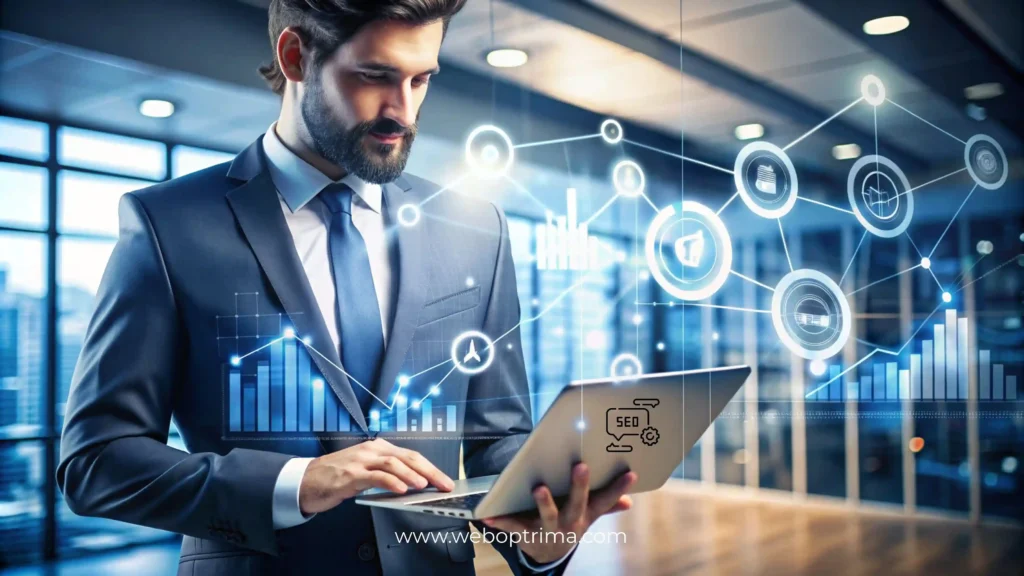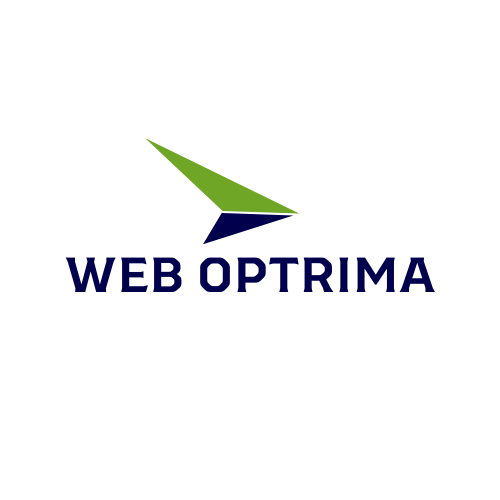SEO stands for “search engine optimization.” It’s the process of making changes to your website so that when someone searches for something on Google, Microsoft Bing, or another search engine, more people visit it.
- Services you provide.
- Products you sell.
- Information on topics in which you have expertise or experience.
Your chances of being seen and visited increase with the prominence of your pages in search results.
In-depth explanations of search engine optimization’s definition and components will be included in this introduction guide by 2024.
Because technology is always changing, websites and their structural designs also evolve, as do the gadgets we use to access search engines.
A click on a mobile phone screen can also be equivalent to a tap, and web searches can be speech-controlled. Artificial intelligence (AI) may even sum up the results we get from our preferred search engine.
We’ll go over each of these distinct SEO facets with you and offer resources so you can keep learning.
How is search engine optimization different from SEM and PPC?
Other phrases you’ll hear and read about a lot in the search marketing world, as well as here on Search Engine Land, are SEM and PPC.
It might also be useful to understand the differences between SEO and other things.
We’ll go through the many terminologies, their meanings, and how they apply to various disciplines in this section.
SEO vs SEM
Search engine marketing, or search marketing as it is more widely called, is what SEM stands for.
One kind of digital marketing is search marketing. It is a catch-all word for the mix of PPC (pay-per-click) and SEO (search engine optimization), such as Google Ads, campaigns that generate visitors through sponsored and organic search, respectively.
Thus, what distinguishes SEO from SEM? In a technical sense, they are identical; SEO is only half of SEM:
- SEO: Increasing clicks on naturally occurring search engine results.
- SEM: Getting clicks from search engines on both sponsored and organic results.
- PPC: Encouraging search engine clicks on sponsored results.
The ideal method to consider PPC, SEO, and SEM is as follows:
Consider SEM to be a coin. One side of the coin is SEO. On the other hand is PPC.
SEO vs PPC
PPC: which stands for pay-per-click is a sort of online advertising in which sponsors are billed each time a link in their ad is clicked.
In search engine results, advertisers place bids based on certain keywords or phrases they wish to display with their adverts.
The advertiser’s ad (paid listing) will show up among the top results when a user searches for one of those terms or phrases.
Therefore, if search marketing is like a coin, then PPC and SEO are two sides of the same coin:
- When a searcher clicks on an advertiser’s sponsored listing using PPC, the advertiser gets billed.
- It is crucial to realize that organic search isn’t “free,” even if SEO is offered as a service and the process of optimizing pages and websites requires time and money. As a consequence, the search result listing with SEO hasn’t been directly paid for.
The question of “SEO vs. PPC”—which channel is more beneficial or offers a higher return on investment (ROI)—has been discussed by some. PPC and SEO are complimentary digital marketing avenues, though. As long as your budget lets it, you should always select both.
As we have already stated, the phrases SEM and PPC are synonymous in the business. That’s not the case, though, in Search Engine Land.
We shall always be referring to both PPC (paid search) and SEO (organic search) when we use the term “SEM.”
Why is search engine optimization important?
One essential marketing channel is search engine optimization.
A 2019 BrightEdge survey found that 53% of all website traffic comes from organic search.
Google Search has over 8.5 billion daily searches and holds a 91% market share in the worldwide search engine industry.
It should come as no surprise that the worldwide search engine optimization sector is expected to reach an astounding $122.11 billion by 2028, given its amazing audience reach.
For companies of all sizes, brands, and enterprises, search engine optimization produces tangible commercial outcomes. This is because, amid a sea of billions of webpages, searching and the search user interface (whether it be an image, voice, or written query style) have become commonplace for internet users everywhere.
People usually start their journey with a search if they want to travel someplace, do something, obtain information, perform research, or purchase a good or service.
But search is so dispersed, especially when it comes to consumer-intent searches. Users have the option to search using social media sites like YouTube and TikTok, merchant websites like Amazon, or conventional online search engines like Google and Microsoft Bing.
Last year, 56% of American online consumers began their product search on Amazon, while 46% did so using a search engine like Google. Notable findings from the same study include:
- 37% start on Walmart.
- 25% start on YouTube.
- 20% start on Facebook.
- 19% start on Instagram.
- 19% start on TikTok.
The rise in social media sites, especially TikTok, as a location for product and knowledge searches (think “how to do X” kinds of searches), is another intriguing feature of this data when compared to prior years.
Indeed, according to a 2023 survey, a startling 51% of Gen Z women prefer to begin their search on TikTok above all other online information sources.
Every year, trillions of searches are made. Being “search engine friendly” is crucial on every platform where customers can look for your brand or company. This is because search is frequently the main source of traffic for websites.
- Featured snippets.
- Maps.
- AI Overviews.
- Knowledge panels.
- Top stories (news).
- People Also Ask.
- Carousels.
- Videos.
For brands and companies, search engine optimization is especially important since, in contrast to other marketing avenues, quality SEO work has a long shelf life. The traffic ceases when a sponsored campaign stops. Social media traffic is, at best, unpredictable and far less than it formerly was.
The cornerstone of holistic marketing is search engine optimization, which means that everything your business does counts. Once you are aware of what your consumers desire, you can use that understanding across your
- Social media properties.
- Campaigns (paid and organic).
- Website content.
One channel that helps you reach important business objectives is organic search traffic (e.g., conversions, visits, purchases). Additionally, it fosters trust since highly ranked websites are typically seen as reliable and authoritative, two qualities that Google actively seeks to reward with higher results.
Types of search engine optimization and specializations
Think about search engine optimization like a sports team. A potent offense and defense are necessary for victory. However, you also need supporters, or a crowd.
Consider off-site optimization as a strategy to draw in, interact with, and keep a devoted following, and technological optimization as your defense and content optimization as your offense:
- On-site SEO: Optimizing the content on a website for users and search engines.
- Off-site SEO: Creating brand assets (e.g., people, marks, values, vision, slogans, catchphrases, colors) and doing things that will ultimately enhance brand awareness and recognition (i.e., demonstrating and growing its expertise, authority and trustworthiness) and demand generation.
- Technical SEO: Optimizing the technical aspects of a website.
Regarding technological optimizations and content, you are still in complete control. Off-site activities are still an essential component of this search engine optimization trinity of success, even though it’s not always the case (you can’t control links from other sites or if platforms you rely on wind up shutting down or undergoing significant changes).
Content optimization (on-page SEO)
In search engine optimization, your content needs to be optimized for two primary audiences: people and search engines. This means optimizing the content your audience will see (what’s actually on the page) as well as what search engines will see (the code).
The goal is always to publish helpful, high-quality content. You can do this through a combination of understanding your audience’s wants and needs, data and Google’s guidance.
When optimizing content for people, you should make sure it:
- Covers relevant topics with which you have experience or expertise.
- Includes keywords people would use to find the content.
- Is unique or original.
- Is well-written and free of grammatical and spelling errors.
- Is up to date, containing accurate information.
- Includes multimedia (e.g., images, videos).
- Is better than your SERP competitors.
- Is readable – structured to make it easy for people to understand the information you’re sharing (think: subheadings, paragraph length, use bolding/italics, ordered/unordered lists, reading level, etc.).
Some essential content components to optimize for in search engines are:
- Title tags
- Meta description
- Header tags (H1-H6)
- Image alt text
- Open graph metadata
Generative engine optimization (GEO) is an emerging specialty within content optimization. GEO is about optimizing your content for visibility in AI-driven search engines (or answer engines) including Google’s AI Overviews and Gemini, OpenAI’s ChatGPT and SearchGPT, Microsoft Copilot and Perplexity.
Brand and authority building (off-site optimization)
Even if they might not be considered “search engine optimization” in the strictest sense, a number of actions can support and indirectly contribute to SEO success.
The activity that is most closely linked to off-site SEO is link building, or the practice of obtaining connections to a website. Obtaining a variety of links pointing at your website from relevant, reputable, and authoritative websites may have a positive impact on your website’s rankings and traffic, among other things.
Link quantity is inferior than link quality. The aim is a huge number of high-quality connections.
How are those links obtained? Numerous website marketing strategies work in tandem with search engine optimization initiatives. Among them are:
- Brand building and brand marketing: Techniques designed to boost recognition and reputation.
- PR: Public relations techniques designed to earn editorially-given links.
- Content marketing: Some popular forms include creating videos, ebooks, research studies, podcasts (or being a guest on other podcasts) and guest posting (or guest blogging).
- Social media marketing and optimization: Claim your brand’s handle on any and all relevant platforms, optimize it fully and share relevant content.
- Listing management: Claiming, verifying and optimizing the information on any platforms where information about your company or website may be listed and found by searchers (e.g., directories, review sites, wikis).
- Ratings and reviews: Getting them, monitoring them and responding to them.
Generally, when talking about off-site, you’re talking about activities that are not going to directly impact your ability to rank from a purely technical standpoint.
However, again, everything your brand does matters. You want your brand to be found anywhere people may search for you.
As such, some people have tried to rebrand “search engine optimization” to actually mean “search experience optimization” or “search everywhere optimization.”
Technical optimization (technical SEO)
For search engine optimization to be successful, a website’s technical components must be optimized.
Building a website that search engines can crawl and index is the first step in the process. “MAKE THAT DAMN SITE CRAWLABLE,” Google trends researcher Gary Illyes once said in a Reddit AMA.
You want to make it as simple as possible for search engines to find and access all of the material (text, photos, and videos) on your sites. Internal linking, navigation, and URL structure are important technological components.
Another crucial component of technological optimization is user experience. Speedy page loads and a positive user experience are highly valued by search engines. It’s important to consider factors like Core Web Vitals, mobile friendliness and usability, HTTPS, and avoiding invasive interstitials.
Structured data, often known as schema, is another field of technological improvement. By using this code on your website, you may improve your visibility in search results and assist search engines comprehend the material on your page.
Search engine optimization is also influenced by site security, content management systems (CMS), and online hosting providers.
Search engine optimization specialties
Subgenres of search engine optimization exist as well. Every one of these niche markets differs from “regular search engine optimization” in a unique way; they typically call for extra strategies and provide unique difficulties.
These five search engine optimization specializations are as follows:
E-commerce SEO: Enhanced category and product pages, faceted navigation, internal linking structures, product photos, product reviews, schema, and more should all be optimized.
Enterprise SEO: This usually refers to managing a website (or several websites/brands) with a million pages or more. It can also depend on the scale of the company, which is usually defined as those that generate millions or billions of dollars in sales annually. Aside from the usual difficulties in getting the development team to apply SEO improvements, doing business additionally usually entails several parties.
International SEO: is worldwide SEO for companies operating internationally. It includes optimizing websites for foreign search engines like Baidu and Naver as well as multiregional or multilingual websites.
Local SEO: Here, the goal is to optimize websites for visibility in local organic search engine results by managing and obtaining reviews and business listings, among others.
News SEO: With news, speed is of utmost importance – specifically making sure you get into Google’s index as quickly as possible and appear in places such as Google Discover, Google’s Top Stories and Google News. There’s a need to understand best practices for paywalls, section pages, news-specific structured data, and more.









